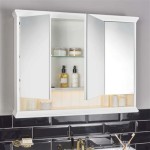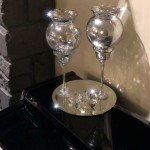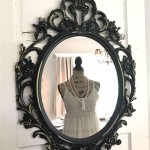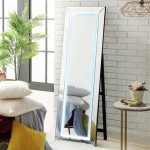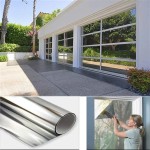Wood Framing for Mirrors
Adding a wooden frame to a mirror elevates its aesthetic appeal, transforming it from a simple reflective surface into a decorative piece. Whether aiming for a rustic, modern, or traditional look, a well-crafted wood frame significantly enhances the mirror's presence in any room. This article explores the various aspects of wood framing for mirrors, from choosing the right wood to the finishing touches.
Selecting the Right Wood
The choice of wood significantly impacts the frame's final appearance and durability. Hardwoods like oak, maple, and cherry offer strength and intricate grain patterns, ideal for elaborate designs and stained finishes. Softer woods like pine and fir are more budget-friendly and easier to work with, making them suitable for simpler frame styles and painted finishes. Reclaimed wood offers a unique, rustic charm and contributes to sustainable practices.
Essential Tools and Materials
Proper tools are crucial for achieving a professional-looking frame. Essential tools include a miter saw for accurate angle cuts, a measuring tape and square for precise measurements, wood glue, clamps for securing joints, and a sander for smoothing surfaces. Finishing materials like wood stain, paint, and sealant protect the frame and enhance its appearance.
Measuring and Cutting the Wood
Accurate measurements are paramount for a well-fitting frame. Carefully measure the mirror's dimensions and add the desired frame width to determine the length of each piece. A miter saw allows for precise 45-degree angle cuts, ensuring tight, seamless corners where the frame pieces join. Double-checking measurements before cutting minimizes material waste and ensures a perfect fit.
Assembling the Frame
Once the wood pieces are cut, assembling the frame requires precision and care. Wood glue applied to the mitered edges provides a strong bond. Clamps hold the pieces firmly together while the glue dries, ensuring a square and stable frame. Allowing sufficient drying time, as per the glue manufacturer's instructions, is crucial for achieving optimal bond strength.
Finishing the Frame
The finishing process enhances the frame's appearance and protects it from wear and tear. Sanding the frame creates a smooth surface for applying the chosen finish. Wood stain accentuates the natural grain of the wood, while paint offers a wider range of color options. Applying a sealant provides a protective layer against moisture and other environmental factors, ensuring the frame's longevity.
Attaching the Mirror to the Frame
Securing the mirror within the frame requires careful consideration. Mirror clips or adhesive can be used, depending on the frame design and mirror thickness. Mirror clips provide a mechanical hold and allow for easy removal if necessary. Adhesive offers a more permanent bond but requires precise application to avoid damaging the mirror's reflective surface.
Adding Decorative Elements
While a simple, well-crafted frame can be elegant on its own, decorative elements can further enhance its visual appeal. Carved details, intricate moldings, or inlaid materials can add a touch of personalization and create a truly unique piece. Consider the overall style of the room and mirror when selecting decorative elements to ensure a cohesive aesthetic.
Hanging the Framed Mirror
The final step involves securely hanging the framed mirror. D-rings or wire hangers attached to the back of the frame provide sturdy hanging points. Consider the weight and size of the framed mirror when selecting the appropriate hanging hardware. Ensure the hanging hardware is properly installed and can support the combined weight of the frame and mirror.
Choosing the Right Frame Style
The frame style significantly impacts the mirror's overall aesthetic. A simple, minimalist frame complements modern interiors, while ornate, carved frames suit traditional settings. Consider the existing decor and the desired ambiance when selecting a frame style. The frame should complement the mirror and enhance the overall design of the space.
Maintaining the Wood Frame
Regular maintenance preserves the frame's beauty and extends its lifespan. Dusting the frame with a soft cloth prevents the buildup of dirt and grime. Avoid using harsh chemicals or abrasive cleaners, which can damage the finish. Reapplying sealant periodically, as needed, provides ongoing protection against moisture and wear.

How To Diy A Wood Framed Mirror

Mirror Frame Diy How To Update A Basic Bathroom Our Faux Farmhouse

Clayton Chunky Wood Frame Mirror Rejuvenation

Clayton Chunky Wood Frame Mirror Rejuvenation

Mirror Frame Diy How To Update A Basic Bathroom Our Faux Farmhouse

Herringbone Rustic Wood Framed Mirror Available In 5 Sizes And 20 Stain Colors Shown Dark Walnut Large Wall Modern

Diy Farmhouse Wood Frame Mirror She Gave It A Go

How To Make A Simple Mirror Frame With Wood Upgrade An Old

Drift Wood Framed Mirror Bouclair

Easy Diy Wood Framed Mirror How To Build A Frame Chalking Up Success

